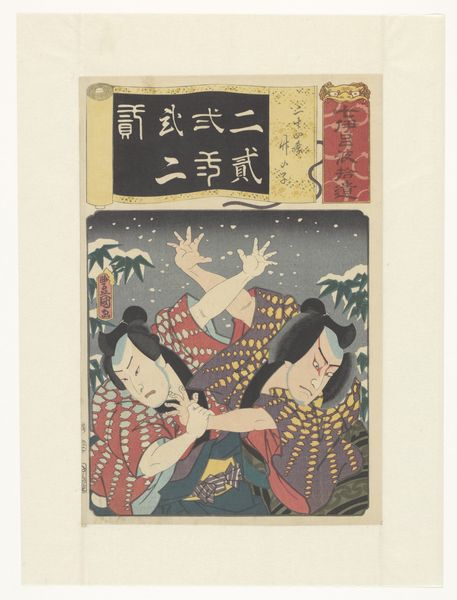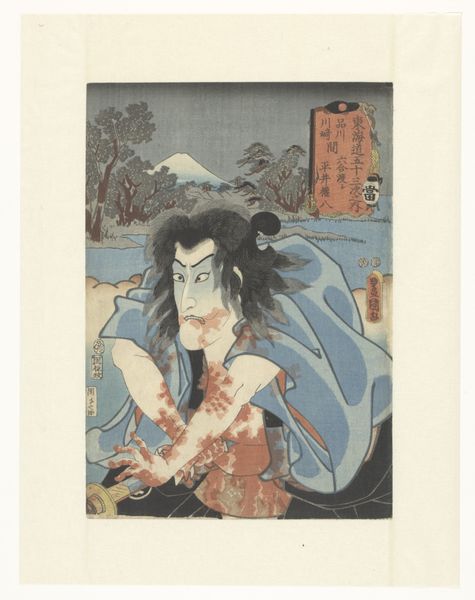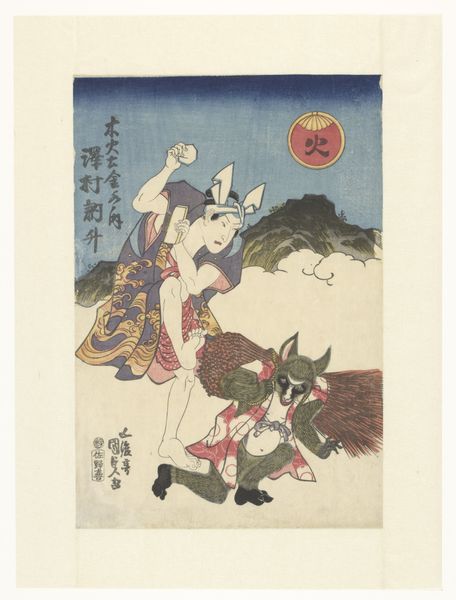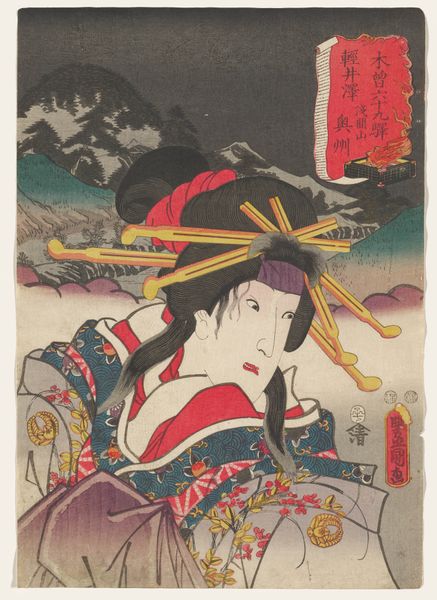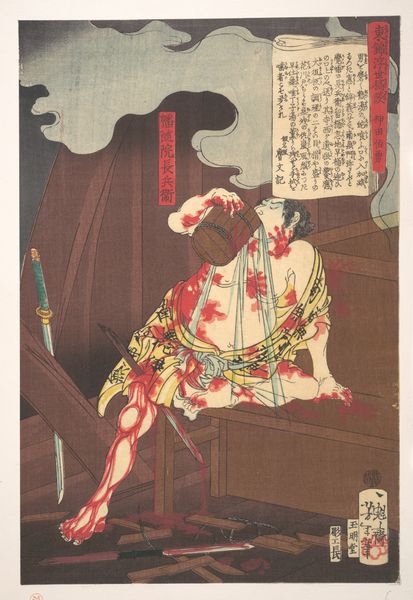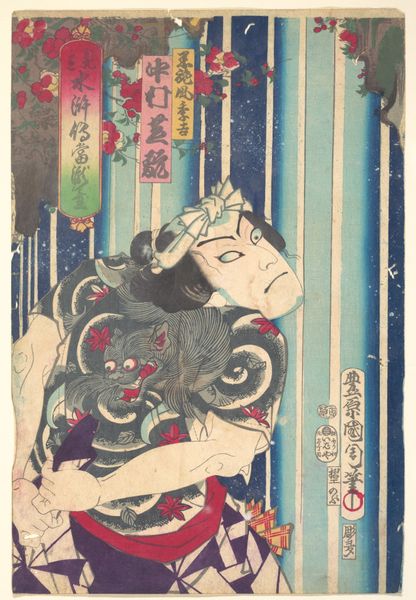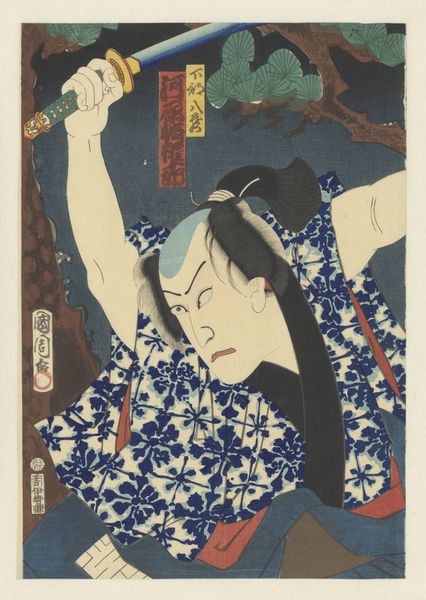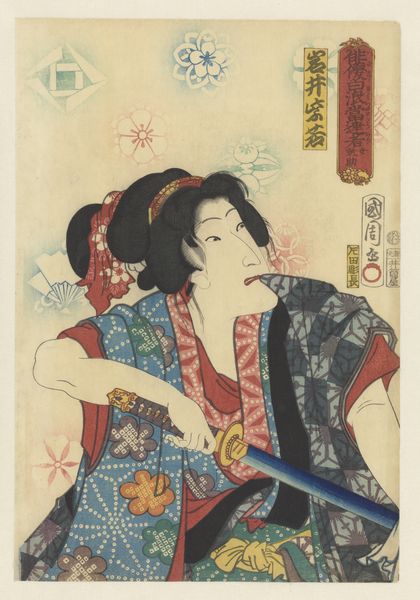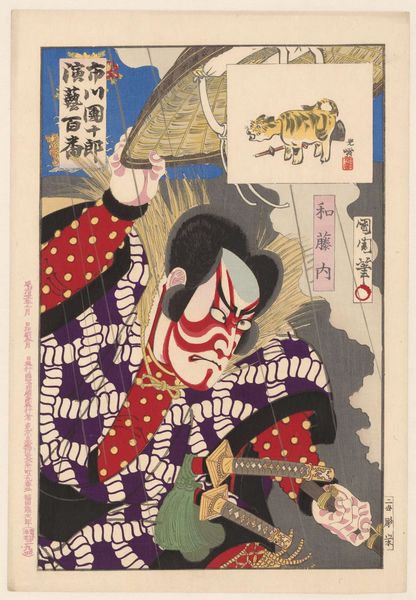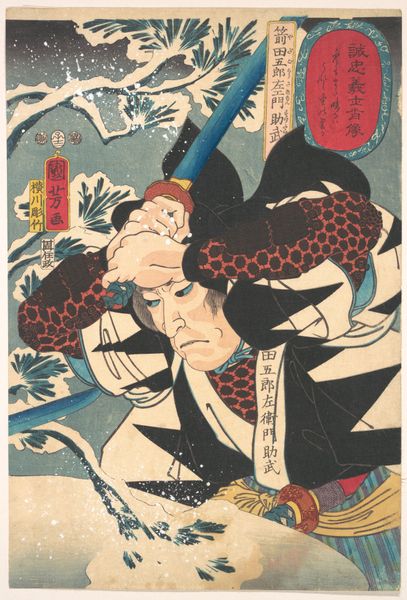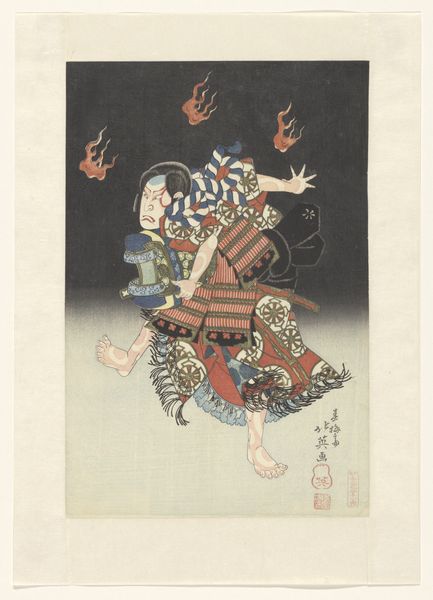![['Scroll with a carp, Kitsugawa Yoemon', 'Seven clear copies ofthe iroha syllabary'] by Utagawa Kunisada](/_next/image?url=https%3A%2F%2Fd2w8kbdekdi1gv.cloudfront.net%2FeyJidWNrZXQiOiAiYXJ0ZXJhLWltYWdlcy1idWNrZXQiLCAia2V5IjogImFydHdvcmtzLzAyNmRiY2Q5LWJiNzctNGY1ZS05ZmNkLWVlNWFhYmE1YmU1OC8wMjZkYmNkOS1iYjc3LTRmNWUtOWZjZC1lZTVhYWJhNWJlNThfZnVsbC5qcGciLCAiZWRpdHMiOiB7InJlc2l6ZSI6IHsid2lkdGgiOiAxOTIwLCAiaGVpZ2h0IjogMTkyMCwgImZpdCI6ICJpbnNpZGUifX19&w=3840&q=75)
['Scroll with a carp, Kitsugawa Yoemon', 'Seven clear copies ofthe iroha syllabary'] 1856
0:00
0:00
utagawakunisada
Rijksmuseum
print, woodblock-print
#
narrative-art
#
animal
# print
#
asian-art
#
landscape
#
ukiyo-e
#
figuration
#
woodblock-print
#
orientalism
Dimensions: height 376 mm, width 261 mm
Copyright: Rijks Museum: Open Domain
Editor: This is "Scroll with a carp, Kitsugawa Yoemon" and "Seven clear copies of the iroha syllabary" by Utagawa Kunisada, created in 1856. It seems to be a woodblock print, and I am immediately struck by the energy and movement in the composition. How do you interpret this work, especially regarding its creation as a print? Curator: I see a fascinating interplay between high art and craft. Consider the process: the artist designs the image, then carvers meticulously transfer it onto woodblocks, and finally, printers carefully apply ink and paper to create the finished work. The materiality of the wood and ink is paramount. Editor: So, the social context of production is just as important as the image itself? Curator: Precisely. Ukiyo-e prints like this one were mass-produced for a growing urban audience. This print challenged the traditional hierarchy between painting, considered a "high" art, and printmaking which, although it demands skill, it is repeatable. It made art affordable. Notice the carp, the man’s musculature - they would take teams to execute perfectly! Editor: It’s fascinating to think of this image as a product of a collective effort and commercial exchange. How does this mass production relate to the value of art? Curator: It forces us to reconsider our definition of "art." Is it about individual genius or about skilled labor and accessibility? How does it relate to the concept of “aura” when it is not “unique”? This challenges the preciousness that some place on unique works, reminding us of the economic system involved. Editor: I never thought about it that way before. Thanks! Now I am also aware of how accessible art contributes to cultural education. Curator: Precisely. And think about the role of consumption and dissemination—these prints traveled far, influencing art and design across the globe. This challenges the concept of who art is "for".
Comments
No comments
Be the first to comment and join the conversation on the ultimate creative platform.

